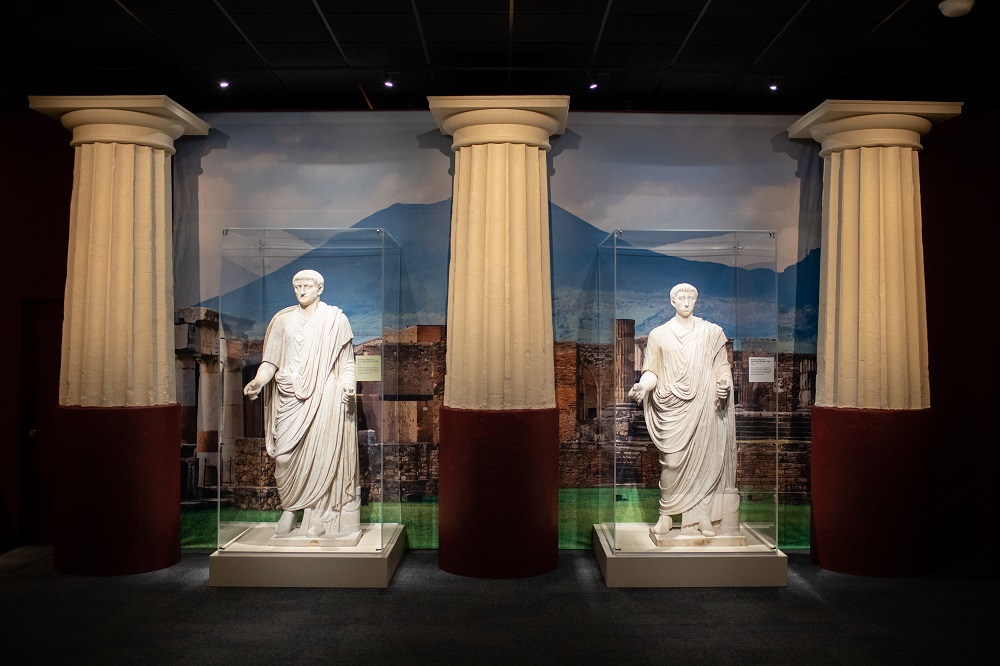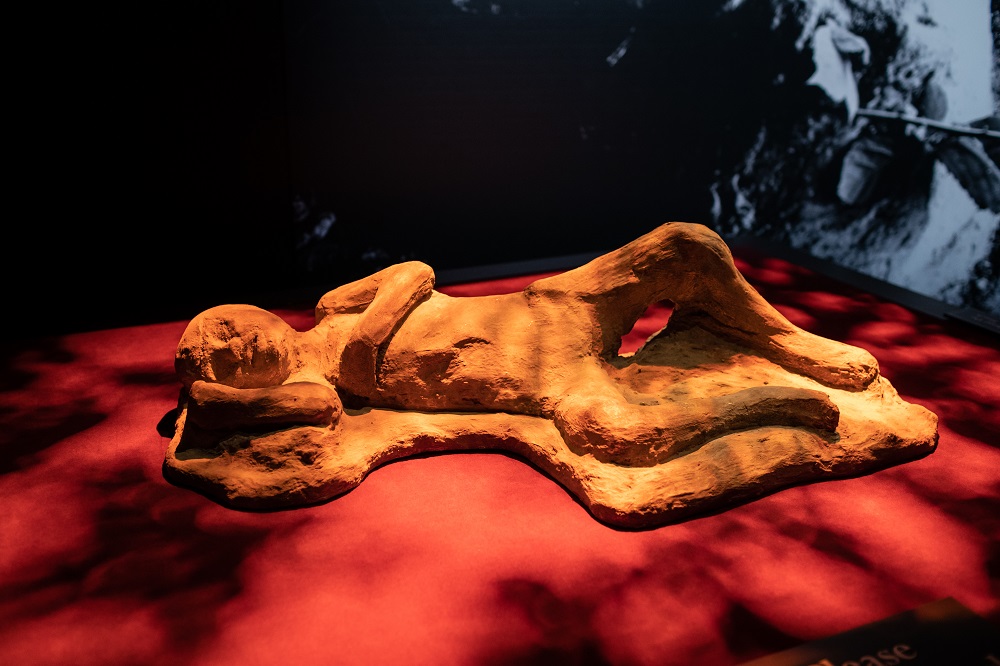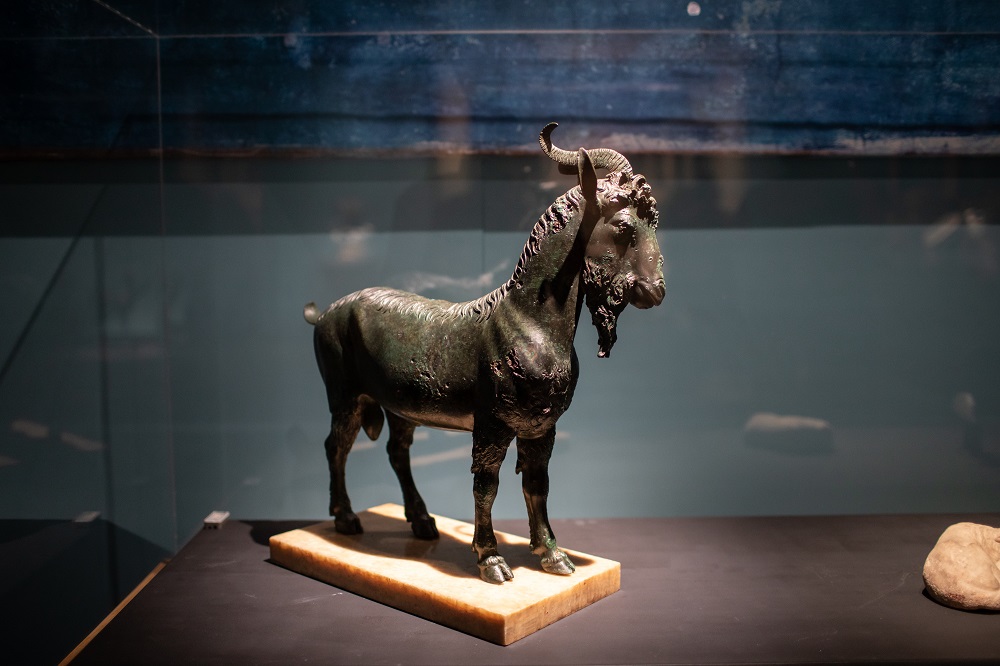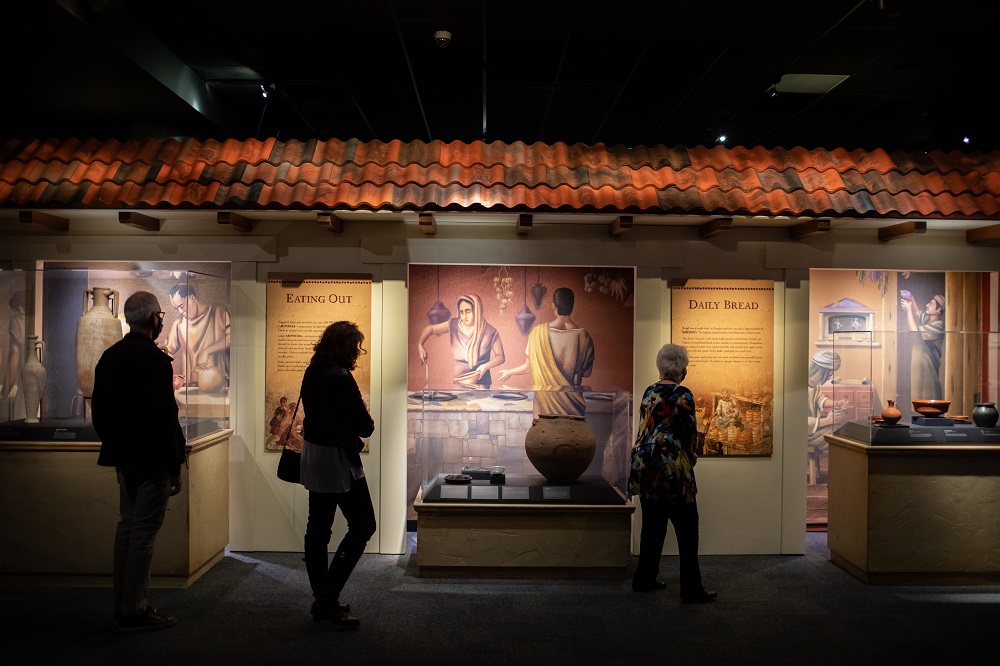For centuries, the story of what happened to the ancient Roman city of Pompeii has captivated the world. The city lost and buried by the ash and volcanic debris of Mount Vesuvius remains a testament to nature’s fury, a tragic time capsule of life some 2,000 years ago.

Opening to the public at the Houston Museum of Natural Science on Saturday, Feb. 13, POMPEII: The Exhibition is a humbling, awe-inspiring look at ancient Roman life preserved for centuries. Members see the special exhibition first, Friday, Feb.12.
“Late in the fall of the year 79 A.D., people woke up in the Roman city of Pompeii, little aware that they would not live another day. Within hours, Vesuvius unleashed mortal mayhem, and within two days, as the eruption ended, Pompeii had disappeared from the map,” says HMNS Curator of Anthropology Dr. Dirk Van Tuerenhout.
As patrons walk through the exhibition, they find that even though this event occurred in 79 A.D., daily life in Pompeii wasn’t so different than ours. The artifacts preserved in the ruins — discovered by archaeologists — remind us that even though we are separated by centuries, life in Pompeii had all the hallmarks of a modern city. It had a thriving city centre, food stalls, fine art, and even graffiti remarking on the day-to-day experience of its residents.

The exhibition coming to Houston includes eight body casts excavated from the site of Pompeii residents. Four lives that ended all too briefly.
“Buried deep in the ash lay a snapshot of Roman life. People, rich and poor, personal belongings, animals, all were swept away by this volcanic fury,” Tuerenhout adds. “Over time, the story was forgotten, and life continued. But 1,700 years later, workmen found the ruins of Pompeii and nearby Herculaneum. Ever since then, excavations have continued. Slowly, methodically, our understanding of what happened has grown.”
“Venite, videte et discete,” says Tuerenhout. “That means ‘come, see, and learn’ in Latin.”
Produced by IMG, POMPEII: The Exhibition features more than 150 precious artifacts on loan from the unparalleled collection of the Naples National Archaeological Museum in Italy. Included in that list are 10 artifacts on their first-ever tour in any exhibition in the United States. Those items include a first-century, bronze gladiator helmet; a Citharist bronze statue of Apollo, dating to 50 A.D; and several remarkable fresco paintings, including one of Dionysus and Silenus, dating between 50 and 79 A.D.
As visitors walk through the exhibition, they travel back in time to that fateful morning of the eruption. In a media-rich, object-based, immersive experience, they learn how Pompeii was a bustling commercial port and strategic military and trading center. Artifacts – including frescoes, mosaics, and statues from the sites – recreate a sense of this world as visitors discover how its people lived, loved, worked, worshipped, and found entertainment.

POMPEII: The Exhibition, tells the tale of this city, hidden from view and forgotten for centuries until its rediscovery more than 250 years ago. The sudden disaster that destroyed it also preserved it and over time archaeologists have uncovered a unique record of its daily life — roads, buildings, municipal services, paintings, mosaics, artifacts, and even preserved bodies. Ongoing excavations at the site provide an ever-evolving picture of everyday life at the height of the Roman Empire.
The Exhibition experience includes:
•Introductory theatre where the scene is set in a video with dramatic reconstructions that describes Pompeii and the nearby volcano.
•Visitors are then transported back in time to 79 A.D. and find themselves in a reproduced atrium from a Roman villa, where they embark on a journey through the ancient city.
•Through the use of projections, audio, video, photographic murals, and graphic reproductions of frescoes and mosaics, visitors experience different locations that existed in the city, including a market, a temple, theater, and baths.
•Over 150 authentic artifacts help bring the story of Pompeii to life. These remarkable objects include: Mosaics and frescoes, gladiator helmets, armor, and weapons, a ship’s anchor, lamps, jugs, cups, plates, pots and pans and other household objects and furniture, jewelry, medical instruments, and tools.
•A simulated 4D eruption theater allows visitors to experience the deathly impact Mount Vesuvius had on this ancient city, culminating in the reveal of full body casts of twisted human forms, asphyxiated by extreme heat and noxious gases and forever frozen in time.

POMPEII: The Exhibition is on display Saturday, Feb. 13, 2021 – Monday, Sept. 6, 2021. Advance tickets are recommended and can be purchased online at www.hmns.orgor guests can purchase tickets in person at the HMNS Box Office or kiosks. To allow for proper social distancing, HMNS is operating at 50% capacity. Learn more about our health precautions before your visit.
This exhibition is supported by HMW Entertainment and the Consulate General of Italy in Houston.

